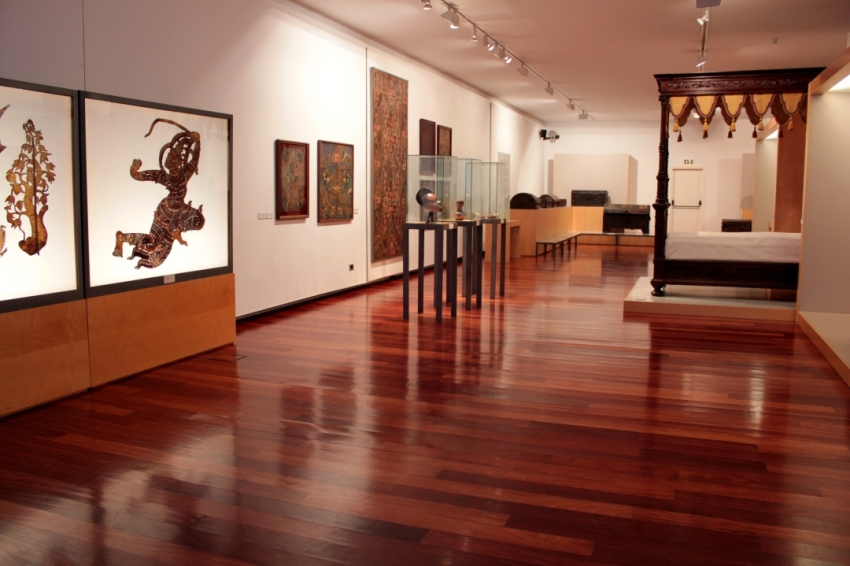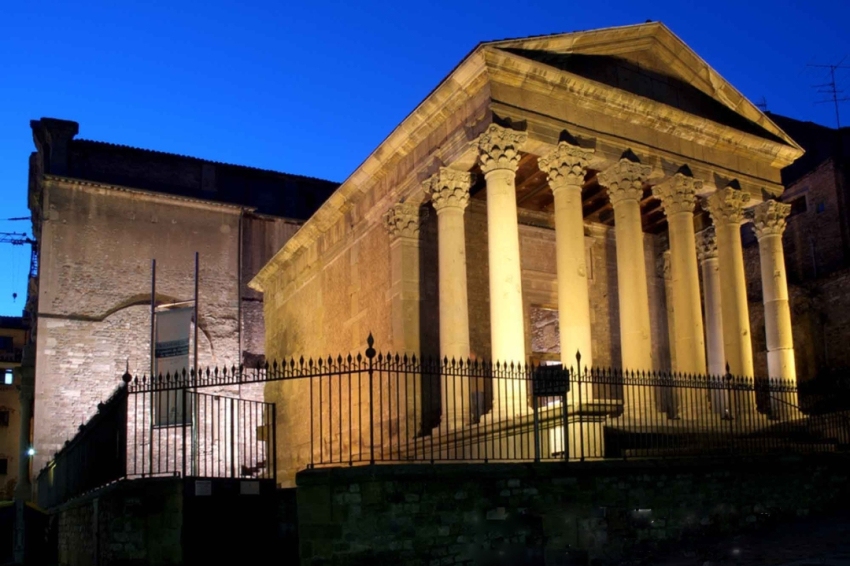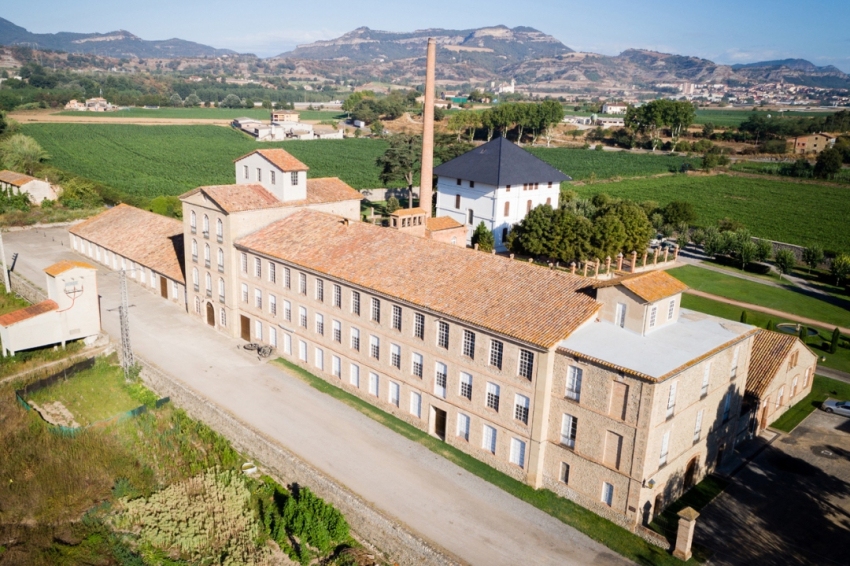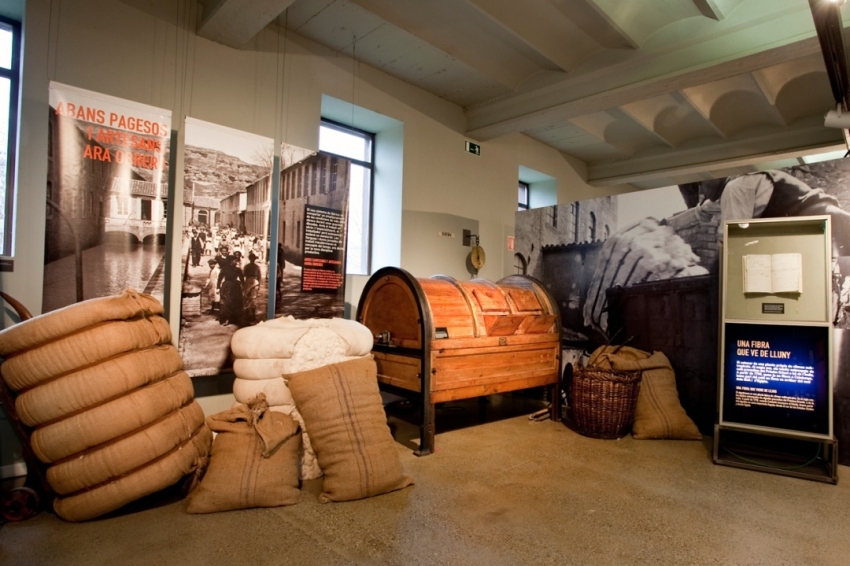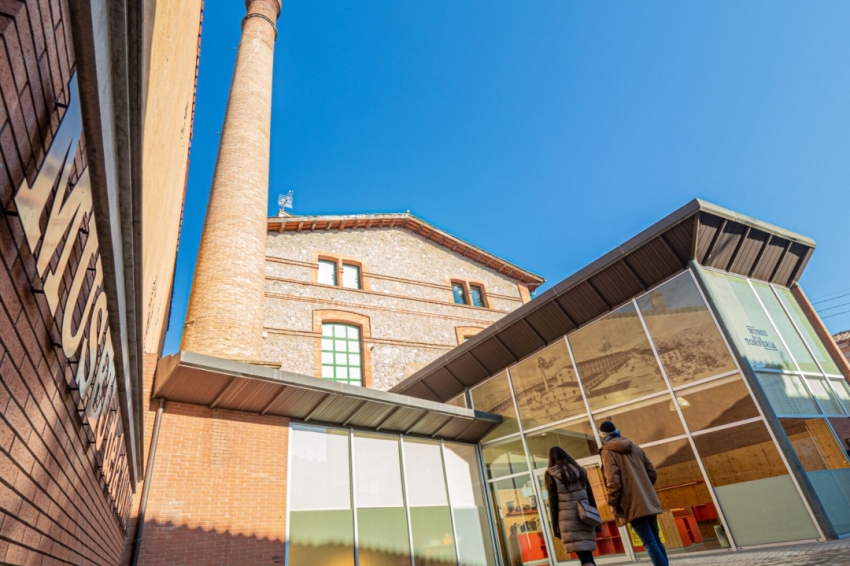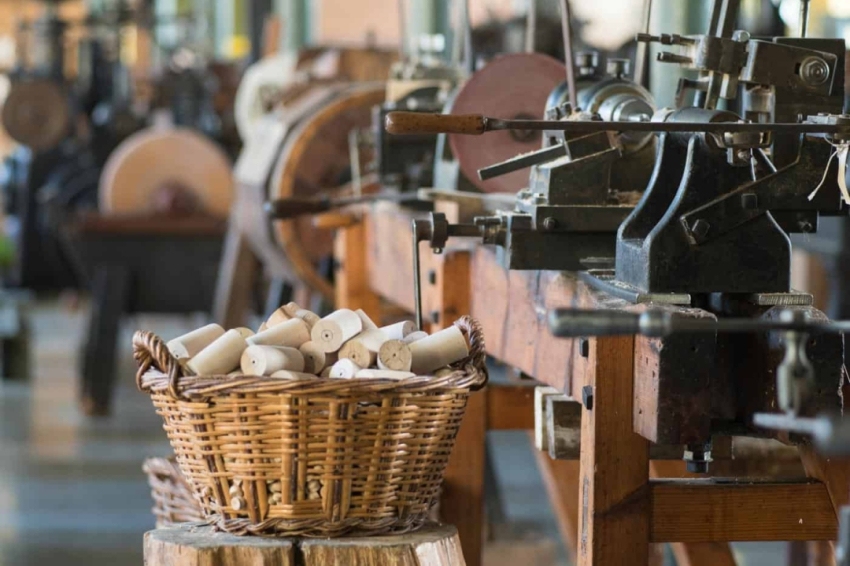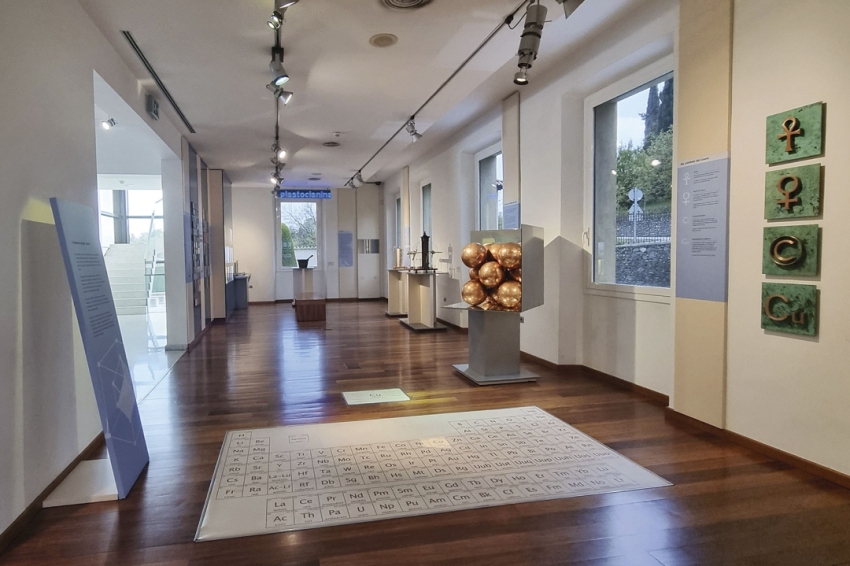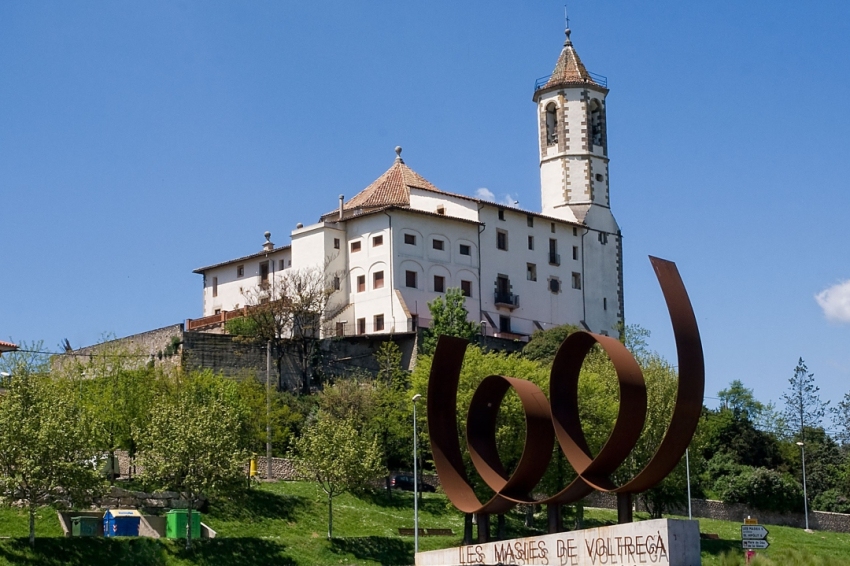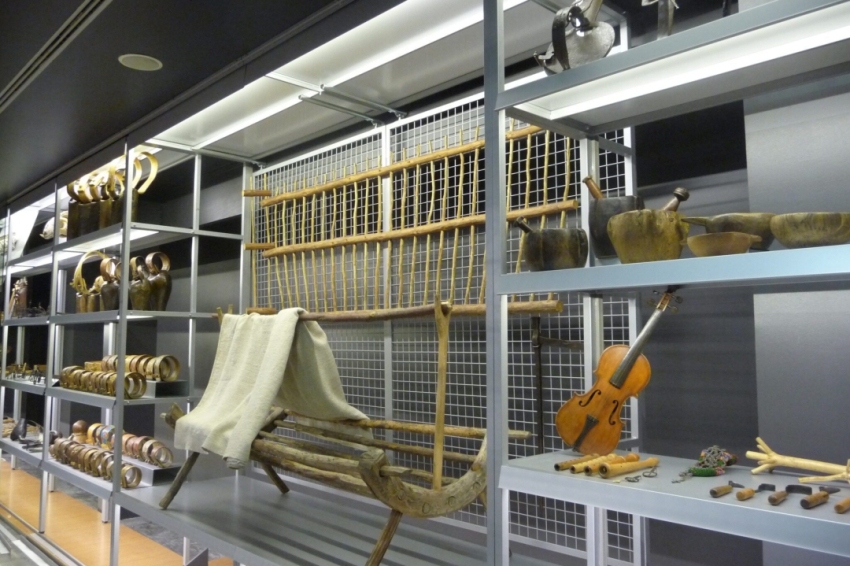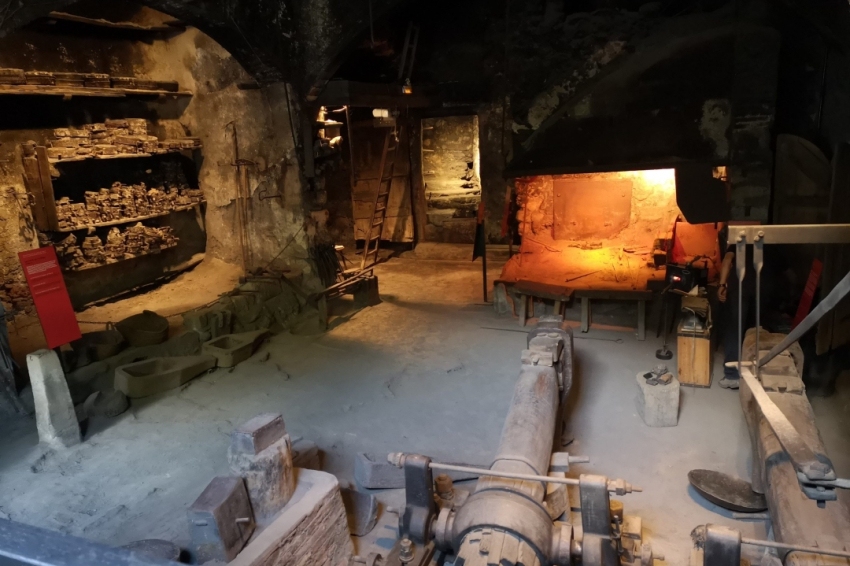Route of trades in Electric Car through Osona and Ripollès

This route is designed to be done by electric vehicle, although it can be done with any other car. Along the route we will suggest municipalities that have charging points and places of interest to visit while we charge batteries. Electric cars are a good way to decarbonise road transport These vehicles do not emit greenhouse gases and do not need fossil fuels to run, which which makes them a viable option to help reduce our CO₂ footprint.The constant improvement in the technology of these cars makes them increasingly efficient and ecological. Consult also the recommendations when traveling by electric car.![]()
![]()
5
Number of sections
![]()
48,8
Total kilometers
The past has led us to be everything we are today and knowing the details of our history is the basis for understanding how the world today works. In this new route to do by electric car we will remember and we suggest you visit some of the most important museums in the regions of Osona and Ripollès.
For this reason, through this trip we will visit towns and cities that have evolved through ancient professions such as tanning, agriculture or livestock, and more recent ones such as metallurgy or industry in general.
In these museums we can discover the traditional crafts that have developed towns and cities towards a prosperous future. And they couldn't have done it without the efforts of their people. That is why we will also highlight the history of these people, how they have evolved and taken advantage of the characteristics of each territory to create their own identity and evolve.
Vic, Manlleu, Torelló, Les Masies de Voltregà and Ripoll are the points where this route of museums and trades will take us. As it could not be otherwise, these towns and cities in Catalonia also have charms outside the museums, and we will give you some advice so that you do not miss the main highlights of each of them.
Ready to travel back in time? Let us begin!
Vic, the city of saints
We begin the route through the industrial museums in the city of Vic. With about 47,500 inhabitants and an area of 30.6 km², the city known as the city of saints and capital of the Osona region is rich in culture, monuments, gastronomy and history.
But the first stop that takes you to Vic is the Museum of Art and Leather. Located at 5 Arzobispo Alemany Street, also called MAP, was inaugurated in 1996.
The great tradition in leather working in the city is the origin of this museum, where you can see first-hand the collection assembled by the renowned Vic tanner Andreu Colomer Munmany.
For those who do not know what it is, the craft of tanning consists of ensuring that the skin of certain animals does not decompose or rot once separated from it, but is preserved so that it can be used to create different objects or clothing.
The MAP exhibits a collection focused on objects made entirely or partially of leather. For example, chests, screens, altar frontals, archimesses, chairs, saddles, masks, figures for shadow theater, etc. The pieces, of great artistic richness, are from very diverse origins and periods and show a wide variety of leather working techniques, such as engraving, tooling, embossing, openwork, embossing, molding or embroidery.
In addition, temporary exhibitions are also organized, all related to the world of leather and the tanning trade.
If you have time to visit more museums, in Vic you will not run out of options. In addition to the MAP, you can also find the Museum of Medieval Art (MEV), which occupies a preeminent place among the museums of Europe and brings together one of the best collections of Romanesque and Gothic art in the world, the Museum of San Antonio M. Claret, a complete educational space on the life of Father Claret, or the Balmes Museum, where you can see an exhibition on the work of the Vic philosopher Jaume Balmes.
Beyond the museums, if you still want to immerse yourself in the capital of Osona, we recommend that you take a walk through its charming Plaza Mayor, a square-shaped arcaded plaza with arcades that go all the way around the square. Much of the city's social life is concentrated there, and you can sit on a terrace, visit the Town Hall or buy some delicious sausages from the region.
Finally, don't leave Vic without seeing the Roman Temple and the Cathedral. The first is the most important monument in the city due to its antiquity, since it was built at the beginning of the 1st century. As for the Vic Cathedral, located in the historic center of the city, it is an imposing building that presents a mix of styles ranging from Romanesque to Neoclassical.
![]()
Next stop
9,6 KM (Manlleu)
![]()
Need to recharge?
Vic
Gurb (2.6 km away)
![]() Carr. Sant Bartomeu del Grau, 64
Carr. Sant Bartomeu del Grau, 64
And in the meantime: you can visit Gurb Castle, located on top of a hill in the center of the village. Unfortunately, its state of conservation is not ideal, but it had great historical importance. By taking a good walk while you have the vehicle charging, you can reach the cross that has crowned the hill for a century, also called the Gurb Cross.
Calldetenes (3.5 km away)
And in the meantime: charge your electric vehicle to resume driving, we recommend that you visit the heart of the city of Calldetenes, which is made up of the parish house, the Mercè church and Plaza Vella. Although it has undergone different changes over the years, this is the most emblematic place in the town and will not leave you indifferent.
Roda de Ter (4.6 km away)
And meanwhile: the obligatory stop in Roda de Ter is at the Casa Miquel Martí i Pol. One of the most relevant poets in the history of Catalonia was born in this town, and currently you can visit his Foundation, where you can find an exhibition that will show you the life and work of the artist thanks to original documents and objects.
Manlleu, the capital of the ter
Distance: 9.6 km
Get into your well-charged electric vehicle and leave the capital of Osona on the B-522 road towards Manlleu. After about 15 minutes of travel, you will reach the next stop on the route that circulates through the Vic plain. Manlleu is a city with a population of about 21,000 inhabitants and an area of 17.2 km².
"The capital of the Ter", as Manlleu is known, is an ancient city with its own identity and a notable industrial past.
The Ter river has defined the limits of the city and is part of its landscapes and urban development. The past, present and future of the city maintains a close direct relationship with the river. And it is for this reason that your next stop will be, as it could not be otherwise, the Museu del Ter.
Located in the Plaza de las Dones del Ter, the museum has the main objective of highlighting the industrial and natural heritage of the middle basin of the Ter River. For this reason, it is a museum of territory and society that is projected onto the territory beyond the building and its collections.
The Museu del Ter building occupies an old spinning factory from 1841 and is a dynamic space that offers a multitude of options to its visitors. You can enjoy 1500 m2 of exhibitions and a large number of activities to understand the industrial history of the Ter and its biodiversity.
The nearly 6,500 preserved objects can be grouped into different thematic areas: science and technology; ethnology and local history; archeology and natural sciences. In the museum there are permanent exhibitions such as The River Factory, The Francis and Fontaine Turbines, the Industrial Society and The Mediterranean Rivers.
Focusing on industrialization and the trades that mark the heart of this route, it is worth noting that the museum explains the formation of dozens of factories and textile colonies, which turned Manlleu and Osona into a dynamic industrial district. The industrialization process was accompanied by profound social and cultural transformations. Through audiovisual pieces, models, sets and other resources, you will be able to see the work that manufacturers and workers did in the factories, especially women, who were the main workforce in the Ter textile factories.
In addition to the permanent exhibitions, the Museu del Ter has a section for having a great time with the family. The Manlleu Serpent EscapeTour is an outdoor escape room to discover the heritage of Manlleu by solving the riddles about the legend of the Serpent. The Treasure of the Quimeta, The Enigma of the Ter or the Ter Bird Game are other activities that will allow you to discover the city and its past through games for all ages.
As you can see, the options are enormous and for this reason the Museu del Ter is one of the most outstanding in Catalonia and an essential requirement when visiting Manlleu.
Although the museum is the great point of cultural and historical attraction, we recommend other interesting points of the city, keeping the river and industrialization as protagonists. Good examples are the Colonia Rusiñol with the Cau Faluga or the former residence of the Rusiñol family with modernist tendencies. And if you simply want to walk and discover the heart of the city, take a stroll along the current Paseo del Ter, the best-known open-air leisure and leisure center in Manlleu.
![]()
Next stop
6,2 KM (Torelló)
Torelló, turner town par excellence
Distance: 6.2 km
A 10-minute drive from Manlleu we find the town of Torelló. To get there you must follow the BV-5224 road for about six kilometers. Torelló is located in the heart of the Ges Valley, at the confluence of the Ges and Ter rivers. It has about 15,000 inhabitants and an area of 13.5 km2.
Industry is the basis of the economic development of the municipality of Torelló. Although it maintains some agricultural and livestock activity, metallurgy, textiles and turning are the driving forces of the city's economic activity.
And this is where we stop again so you can visit a museum related, this time, to turning. This sector is traditional in Torelló and is a deeply rooted activity, since the Ges River valley is where the largest number of companies in all of Catalonia related to this activity are concentrated.
Turning is a technique that consists of shaping metal pieces using a lathe. The history of turning in Torelló dates back to at least the 13th century, but it reached its peak in the mid-19th century, with the creation of the large horn and wood workshops Pujol (1853) and Vidal (1854). Many products were made, but mainly toys, decorative objects, furniture and pipes.
The Ges Valley Turning Museum is based in the old Can Vidal factory, on La Pau Street, 14, in Torelló. There you can find the history of this artisan trade, the wood and horn turner, which, with the arrival of industrialization, became an industrial sector complementary to the textile sector.
The building where the museum is located, the Torneria Vidal, is an example of the industrial architecture carried out by the master builders and engineers of the late 19th century. The Ges Valley Turning Museum was created in 1995 and over the years it has evolved, especially with donations that the owners of the turning factories have selflessly made.
On the ground floor of the museum you can see the production process of the large factories specialized in the manufacture of accessories for the textile industry, such as a loom bolo, a warp roller or a roving barrel.
On the first floor you will discover the origin of turning and its evolution. The museum focuses on the specific case of the Ges Valley, but you can also find information about other turning centers that existed in Catalonia, such as Sant Hilari Sacalm, Arbúcies or Manresa.
Steeped in industrial history and the turner's trade, Torelló has other tourist attractions that are also worth discovering. If you are lucky enough to go for Carnival, you will be able to experience one of the craziest and most well-known festivals in Catalonia. But during the rest of the year we especially recommend a visit to the church of Sant Feliu de Torelló, protected as a cultural asset of local interest. Located in the historic center of the town, the church can be seen from all parts of the municipality.
![]()
Next stop
7,2 KM (Les Masies de Voltregà)
![]()
Need to recharge?
Torello
Oris (7.9 km away)
And in the meantime: you can take a walking excursion to the Orís Castle, where you can enjoy a spectacular panoramic view. Despite being in ruins, the castle is located on top of a hill and has an unmistakable shape. The existence of this fortification dates back to the year 914 and it fulfilled the mission of safeguarding the passage of the River Ter on the way to Ripoll.
Les Masies de Voltregà and the origin of copper
Distance: 7.2 km
Leave Torelló with your electric vehicle and take the BV-5225 road to later join the C-17. After 10 minutes by car you will arrive at the next destination on the route, the town of Les Masies de Voltregà, still located in the Plana de Vic. With just over 3,000 inhabitants and an area of 22.4 km², the small municipality of Sant Hipòlit de Voltregà is located within its municipal area. Les Masies de Voltregà was established as an independent municipality after separating from the town of Sant Hipòlit de Voltregà in 1801.
And in this small place in Plana de Vic we find a museum unique in all of Europe: the Coure Museum. You can find it in Colonia Lacambra, s/n, in a spectacular modernist building, an old tower of the Counts Lacambra, from the beginning of the 20th century, which is located within the facilities of the La Farga company.
The Les Masies de Voltregà Copper Museum was inaugurated in 2008 to celebrate the bicentenary of the birth of La Farga. Its main objective is to disseminate the applications that La Farga has made of copper throughout history in the industrial, economic and environmental fields.
The Coure Museum has different resources, collections and a very interesting educational offer so that visitors can learn about the discovery of copper, the origins of metallurgy and the relevance of copper from then until industrialization. Copper is a reddish chemical element that belongs to the group of noble metals. It is a relevant metal because it is an excellent conductor of heat and electricity and, at the same time, it is ductile and malleable. Likewise, copper participates in biological functions of people, animals and plants.
Once inside the museum you will find a walkway made of copper, of course, from where you can see firsthand the production process of La Farga's copper transformation, in addition to seeing what the colony was like in the past and a trefilaria plant.
And once you have known the world of copper in this exciting museum, we recommend that you go to the sanctuary of the Virgen de la Gleva. This church is a work protected as a Cultural Asset of Local Interest and is the second most important sanctuary in Catalonia after the Sanctuary of Montserrat. Therefore, it is a mandatory visit.
The legend says that a shepherd girl found the Virgin on Mount Terrer, inside a cave formed by two columns that supported a glebe. For this reason, in 1286, a chapel was built in the place where the image was found. Later, buildings were added until 1766, when the current construction ended.
![]()
Next stop
25,8 KM (Ripoll)
![]()
Need to recharge?
The Voltregà Farmhouses
![]() Casa Forta el Despujol, Carretera C-17, 70.400
Casa Forta el Despujol, Carretera C-17, 70.400
San Quirce de Besora (10.2 km away)
And in the meantime: if you are lucky enough to stop in Sant Quirze de Besora to recharge your batteries, you can rest peacefully in the municipal park on the banks of the Ter or visit the well-known Ratafia Bosch, originally from this town of Osona. The distillery, open since 1892, can be visited, and in this way you will be able to learn about the production and taste one of the most traditional Catalan drinks.
Ripoll, the cradle of Catalonia
Distance: 25.8 km
We hope you have your electric car well charged before leaving Les Masies de Voltregà, as the journey to the new destination is slightly longer. Following the C-17 highway, in about 25 minutes you will arrive at Ripoll, the last point on your route and the only location outside the Osona region.
Ripoll is the capital of the Ripollès region, it has about 10,500 inhabitants and is considered the Cradle of Catalonia. Because? You will ask yourself. Well, because of its strategic territorial location and its premature industrial and business activity. The most important monastery in the country was built in the city, the Monastery of Santa María de Ripoll, founded by Count Guifré el Pilós.
The city has always been an important confluence of people from other places. And that cultural diversity and economic activity made it one of the references that earned the nickname El Bressol de Catalunya.
But after knowing this detail of the history of Ripoll, we return to focusing on the museums, which are the heart of your route. In Ripoll you can visit the Ethnographic Museum. Located in the Plaza del Abad Oliba, in the headquarters of the old Can Budellers building, it exhibits a large collection of objects linked to private life, trades and industry.
The Ethnographic Museum of Ripoll was founded in 1929 and was the first to collect ethnographic material in Catalonia. The main mission of this center is to document, study, disseminate and conserve the material and intangible ethnological heritage of the Ripollès region.
You can find three permanent exhibitions on the history of the museum throughout its more than 80 years, collections related to the peasant sector, work and life at home, artisans and finally, industrialization.
Thus, it is an ideal place to discover the past and the transformation of society through jobs and people.
In addition to the permanent exhibitions, the Ethnographic Museum of Ripoll also exhibits different very curious collections, such as Ripoll firearms, games and toys or religion.
And... we do not want to say goodbye to Ripoll without talking about another very relevant visit to the capital of Ripollès, which will be linked to everything you have known in the previous museum. And this is none other than La Farga Palau de Ripoll, which you can find on Paseo de la Farga Catalana, 16.
Founded as an iron forge in the 17th century, it maintained its activity for five centuries, until 1978. Importantly, it was the only forge in Catalonia that produced copper pieces until the second half of the 20th century.
Currently, the Farga Palau de Ripoll can be visited to discover its old facilities and learn about the entire manufacturing process. In 1986, La Farga Palau de Ripoll was recognized as a site of world metallurgical interest by the American Society for Metals.
![]()
Need to recharge?
Ripoll
![]() C-17, 17, 17500 Ripoll, Girona
C-17, 17, 17500 Ripoll, Girona
Rocafiguera (3.7 km away)
And in the meantime: you can take a short excursion walking to the Font del Tòtil, where you can relax in a very attractive recreational area full of nature. The Freser River passes a few meters from the area and there is an area for picnics.
Saint John of the Abbesses - The Jordanian Colony (8.2 km away)
![]() N-260, Sant Joan de les Abadesses
N-260, Sant Joan de les Abadesses
And in the meantime: we recommend that while you load the car you visit the Jordanian Colony of San Juan de las Abadesses. Located at the foot of the Ter River, this former textile colony also known as Cal Gat is included in the Inventory of the Architectural Heritage of Catalonia.
In collaboration with
Etecnic is the leader in 360° installations of electric, connected and renewable mobility. It has carried out more than 1,100 projects, manages more than 7,000 electric vehicle charging points, has more than 700,000 registered users on its EVcharge APP, for which it has delivered more than 3 million hours of recharge and reduced more than 21,000 tons of CO₂.
You may also be interested in: Reduce your ecological footprint | Let's go to museums in Catalonia | Discover Catalonia by electric car
What to do
Parc d’Aventura Anigami
L’Esquirol (a 9.4 Km)The Anigami Adventure Park at Mas Les Comes de l'Esquirol is a…
Where to eat
La Santa Restaurant
Ribes de Freser (a 10.3 Km)Our fires cook locally sourced food, harvested using traditional methods. We support…
Braseria Les Comes
L’Esquirol (a 9.4 Km)Located on the premises of the Anigami Adventure Park, they offer menus…
Restaurant Dachs
Les Llosses (a 8.4 Km)Restaurant Dachs offers versatile spaces for celebrations in Les Llosses, with rustic…
Restaurant el Pont 9
Camprodon (a 18.8 Km)A restaurant serving humble and simple cuisine, where you can enjoy the…
Where to sleep
Casa de colònies El Company, Fundesplai
Vilanova de Sau (a 10.4 Km)Discover the El Company hostel, in the municipality of Vilanova de Sau,…
Càmping La Vall
Taradell (a 8.2 Km)Located on the outskirts of Taradell, in a beautiful valley where a…
Casa de colònies Mas Cabàlies, Fundesplai
Ogassa (a 10.4 Km)Mas Cabàlies is located in the municipality of Ogassa, in the Ripollès…

